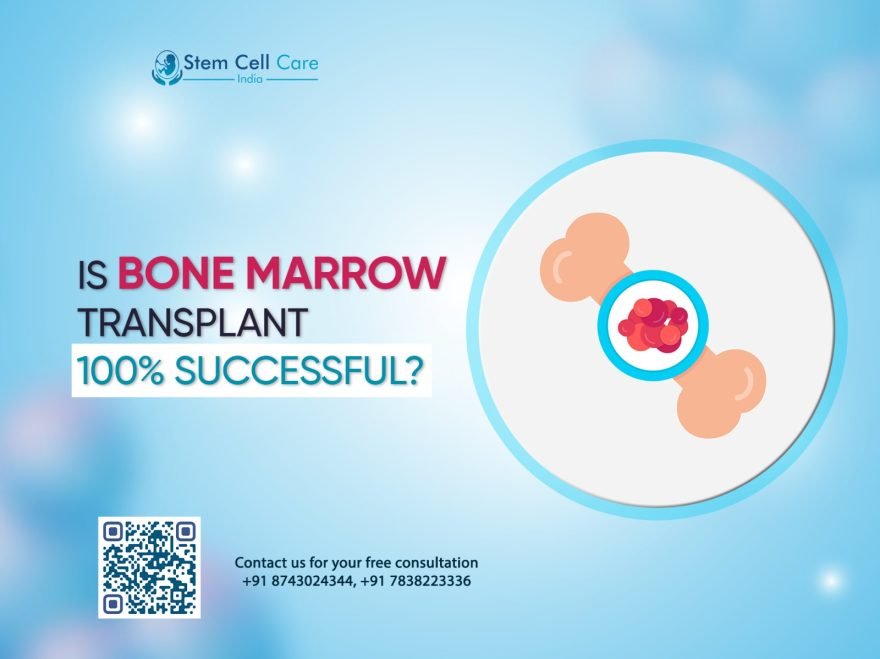Table of Contents
A bone marrow transplant is an important procedure for cancer patients, people suffering from blood disorders, and people who have genetic diseases. While promising much, the chances are uncertain regarding 100% success. This post delves into the procedure, success factors, and recent developments in bone marrow therapy and stem cell transplants.
About Bone Marrow and Its Function
Bone marrow is a sponge-like tissue inside bones. It is the origin of almost all blood cells, including red cells, white cells, and platelets. Diseases that result in potentially fatal conditions related to the bone marrow include leukemia, lymphoma, and aplastic anemia. For these conditions, a bone marrow transplant or stem cell transplant will be required to implant healthy stem cells into the body, which produce blood cells.
Types of Bone Marrow Transplants
Autologous Transplant
The harvested stem cells from the patient are treated and returned to the individual. The most important use of this procedure involves when the bone marrow does not degenerate but requires support after intensive treatments, such as chemotherapy.
Allogeneic Transplant
The transplant is of the type where there are applied stem cells from a donor. There is a necessity for matching as it does not create complications, and that can be well established with HLA (Human Leukocyte Antigen) typing.
Umbilical Cord Transplant
The technique utilizes stem cells from umbilical cord blood. This is not as intrusive, especially to children and young adults.
Success Rates of Bone Marrow Transplant
While bone marrow transplantation is a very effective treatment, it is not 100 percent successful. Success depends upon various factors:
- Type and Stage of Disease: The earlier the stage, the better the prognosis.
- Patient Age: Younger patients usually recover better compared to elderly patients.
- Quality of Donor Match: A closely matched donor greatly reduces problems such as graft-versus-host disease (GVHD).
- Post-Transplant Care: Proper follow-up care, medication, and monitoring will achieve the main purpose.
The success rate varies between 60% to 90% for cases such as leukemia and lymphoma but is a variety of individual responses.
Advances in Bone Marrow Therapy
New techniques in bone marrow therapy have improved the success of the procedure. Methods, including reduced-intensity conditioning, make such transplants not so dangerous for elderly patients or those with other illnesses. Discoveries in stem cells continue to make procedures involving stem cell transplantation more efficient.
Why Choose Stem Cell Care India for Bone Marrow Transplant?
Stem Cell Care India is a trusted consultancy for stem cell treatment. With a long history of innovative treatments and prompt professional advice, patients can expect complete care in the clinic.
Here is why one should prefer to go to Stem Cell Care India:
Expert Consultation: The right choice would be to seek medical professionals who can assist in proper assessments and individualized treatment plans.
Superior Infrastructure: Sophisticated laboratories and equipment facilitate highly precise and safe procedures.
International Acclaim: They excel at producing superb results in bone marrow therapy and stem cell transplant. Patients come from all parts of the world to seek their help.
Comprehensive Care: From first consultation right up to aftercare post-transplant, patients are given comprehensive care at Stem Cell Care India.
The Bottom Line
Success rates in bone marrow transplants are highly promising, mainly with advances in therapy and techniques. Key factors-early diagnosis, compatible donors, and the care of experts appear to influence the outcome. Stem Cell Care India is best-in-class, offering personalized consultants as well as state-of-the-art solutions. Nothing gives one sure-fire success, but bone marrow transplantation continues to save lives, bringing health and optimism to patients and their families as the field of stem cell treatments continues to evolve.


